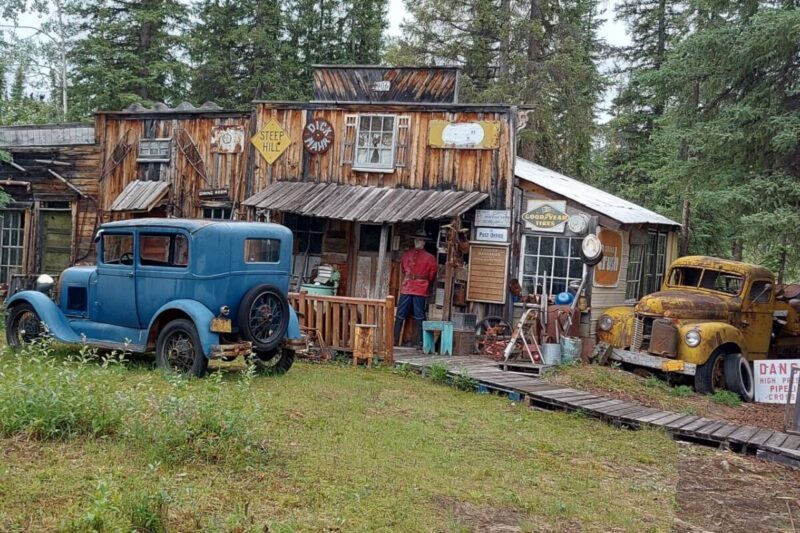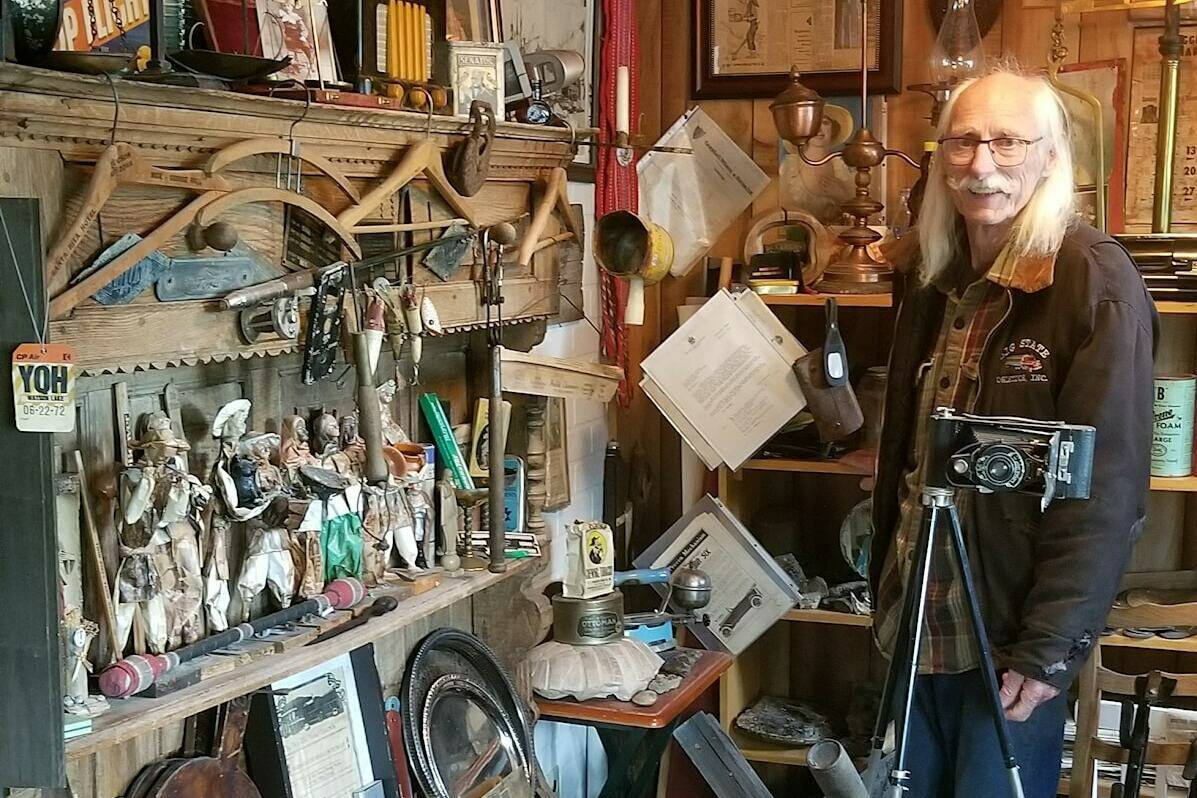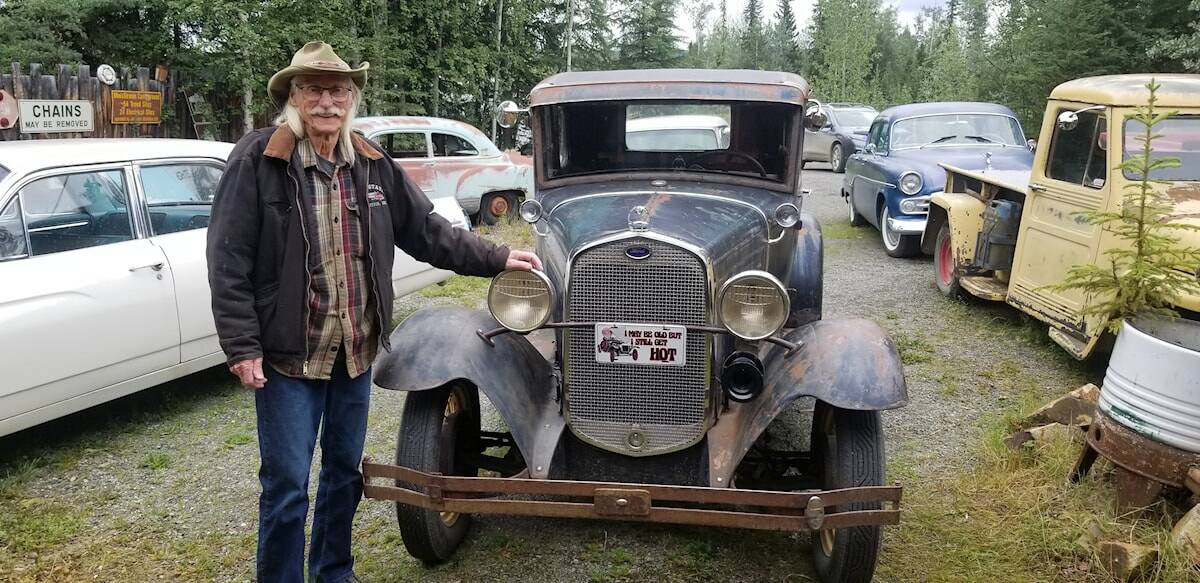The population of Beaver Creek, Canada’s westernmost community, is in dispute. According to the federal census in 2021, the population was 78 individuals, down from 131 in 1996. It has bounced up and down between those two figures for more than 40 years. According to the annual statistical review, produced by the Yukon Bureau of Statistics, the population was 107, down from a peak of 122 in 2013. Any way you look at it, Beaver Creek is small.
The Alaska Highway was once populated by a string of multipurpose lodges and gas stations that serviced the traffic on this rugged piece of road. Most of them are now gone, either demolished or overgrown after years of neglect. One of the people who came to the Yukon to work in one of these lodges is Sid van der Meer, 87, who has lived at Beaver Creek for many years.
When I went to the visitor centre in Beaver Creek recently, I was eager to talk to him, and we arranged to meet at his home the following morning.
My wife Kathy and I arrived the next day. Sid welcomed us warmly and invited us inside to talk. He was born in Friesland, Netherlands, in 1937, he told us, and remembers the German occupation of Holland during the Second World War. He recalls the allied bombers flying over his home on missions to bomb German targets; he remembers the tanks churning up his family’s farm land, and he remembers the hunger.
Sid’s family moved to Canada, when he was 16 years old. He brought with him a love of history. His Dutch home was built in 1491, so Sid developed a lasting interest in old things. He was aware of the history of the Klondike Gold Rush, and the building of the Alaska Highway, so he made his way north in 1961, and ended up getting a job at the Mountain View Lodge at mile 1,128 on the Alaska Highway.
He worked there for three years, and when the owners decided to move south, they sold their business to him for a song. For years, he operated a lodge with a gift shop, gas pumps, auto repairs, a tow truck and four cabins. A quick check in my 1972 copy of the Milepost has an advertisement for the business that makes reference to: “Free museum — free camper parking,” and 24-hour towing. He got married, and had three sons and a daughter. The constant 145-kilometre round trips twice daily to take his children to school at Destruction Bay convinced him to move back to Alberta, but that didn’t last for long, and he was back in the Yukon — this time, for good.
Sid has been collecting things for decades. There were Alcan maintenance camps, and the pipeline that ran from Haines, Alaska, and along the Alaska Highway. That was abandoned in 1971, as were the maintenance camps supporting the pipeline. They left a lot of stuff behind.
Sid was into recycling in a big way even before it was fashionable to do so. He collected things abandoned along the highway. He built his home out of recycled materials, and did the same for his Bordertown Museum.
The museum is a row of structures behind his house that consists of a series of small store fronts with a boardwalk out front. The windows came out of the abandoned Westmark Hotel in Beaver Creek. When the territorial government converted to metric, all the old sign posts were taken down and the blanks kept for replacing missing or damaged posts that were destined for the dump. Sid got to them first, and now they support the awnings that cover the boardwalk.
He took us on a tour of his unique collection, organized into various displays: a garage, a general store, barber shop and so forth. In his general store display are numerous packing boxes and dozens of old product tins, some displaying prices of five and ten cents per tin (that tells you how old they are). There were cans of Club Chewing Tobacco (10 cents a tin), baking powder tins (Nabob and Magic Brands plus Clabber Girl brand baking powder — have you heard of it? I haven’t). There are tins of cigarette tobacco (Zig-Zag, Chateau Gay, Philip Morris and Stag brands).
Two cans of KLIM powdered milk caught my eye. When I first came to the Yukon in 1971, the Taylor and Drury store in Whitehorse still stocked this product, which I regularly purchased for my backpacking trips.
On one shelf is a row of kerosene lamps to tempt customers. On a counter are weigh scales and a cash register. Outside on the boardwalk is an old wringer washing machine, and something I had never seen before, a hot-water heater made of two 45-gallon oil drums welded together. Standing horizontally, the upper drum holds water; a spigot has been conveniently attached at one end. Half of another drum welded to the underside of this barrel serves as a firebox into which a supply of firewood could be fed.
The centrepiece of the barber shop is an old barber’s chair Sid purchased in Dawson City. He sits in it and poses while we take photos. Former Yukon MLA John Livesay represented the Carmacks-Kluane riding from 1958 to 1964, and again from 1967 to 1970. Livesay operated one of the first businesses in Beaver Creek in 1949. Both Livesay and his store are long gone, but Sid saved the sign from the front of the business: “Livesay’s: Tires, Store, Gas,” it reads.
We returned to his house, which is also a living museum. One corner near the front entrance displays a variety of interesting items. One shelf is filled with brightly coloured figurines (a recent acquisition I am told), and above it hang several old wooden coat hangers, hooked onto a shelf that supports a set of gold scales, an old radio and a stereopticon (a device used to look at 3D images).
In another room, he has assembled a collection of documents. He shows me a 1964 rural preliminary list of electors for Beaver Creek. Included in the list is one “Vander Meer, Sidney, lodge worker, White River.” He pulls out a paper shopping bag which reads “Seasons Greetings from Taylor & Drury and Staff.” In another room, he shows me a yellow pennant with the insignia of the Alaska-Yukon Pacific Exposition of 1909, sewn on it beside the letters “AYP.”
Sid has a wide range of mechanical skills, and a love of things that move. He owned and flew his own airplane. It crashed at the landing strip at Burwash, and he walked away unscathed. He repaired it and flew again. He has owned various motorcycles, including a Harley and a Norton. He sold his last motorbike, a Yamaha V-Star, a couple of years ago, because riding motorcycles was hard on his back.
But his pride and joy are the many classic automobiles he has restored. One, that he has since sold, was my favourite car of all time: a red 1960s Ford Mustang. In his back yard is a blue 1928 Ford Model A, still in running condition. In front of his house is an assemblage of classic automobiles that resembles a fancy used car lot. In a mechanical shop he set up behind his museum, he is currently restoring a convertible.
Sid is a man of considerable energy and skills, who is going to pursue his passions, collecting things for his Bordertown Museum, restoring classic cars, and welcoming travellers to Beaver Creek, as long as he can.
“I wouldn’t trade my life for anything,” he tells me. Sixty years and counting since he first came to live and work in the Yukon, and he’s not going to leave.
Michael Gates was the Yukon’s first Story Laureate from 2020 to 2023. His latest book, “Hollywood in the Klondike,” is now available in Whitehorse stores. You can contact him at msgates@northwestel.net













 VIDEO: Thousands gather for legendary Martin Mars final landing
VIDEO: Thousands gather for legendary Martin Mars final landing